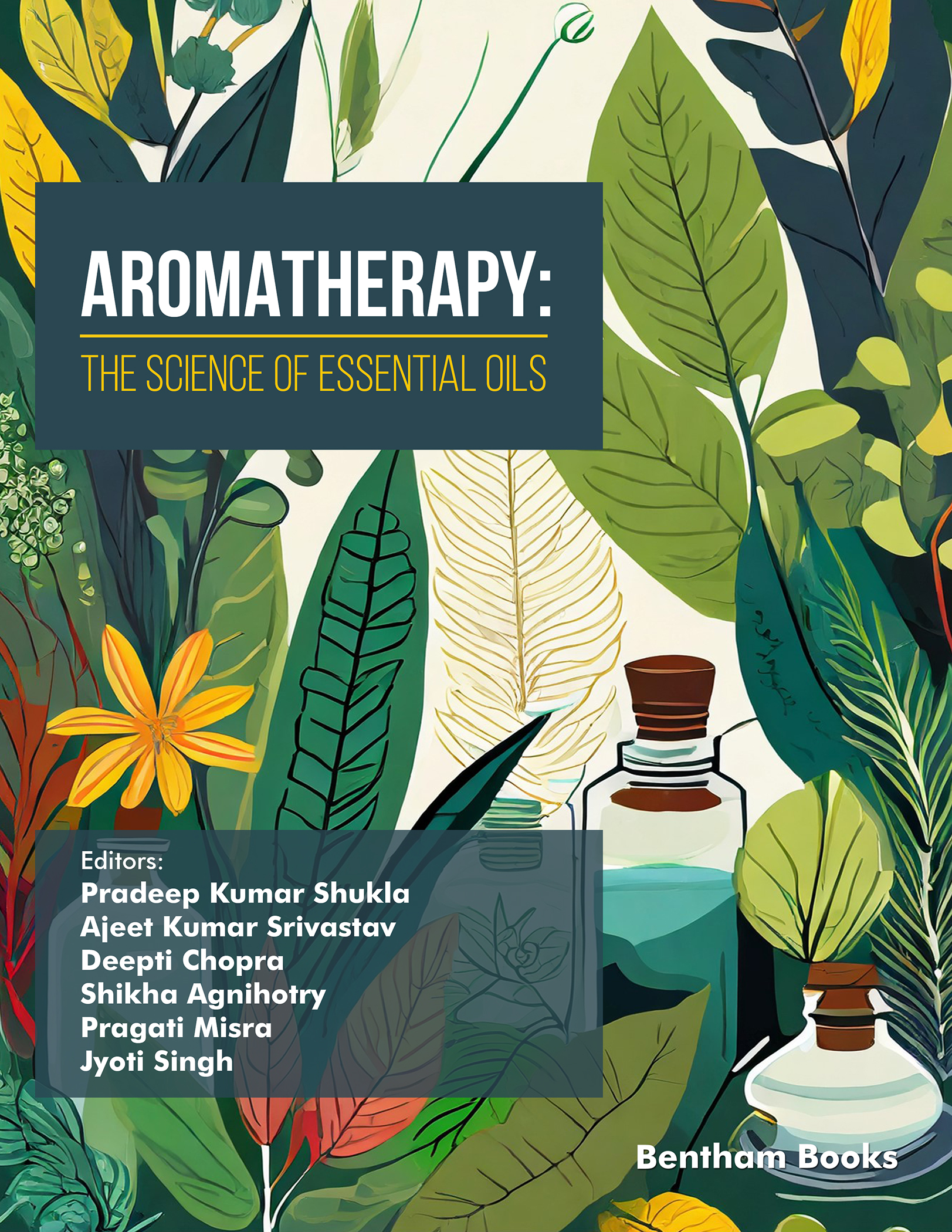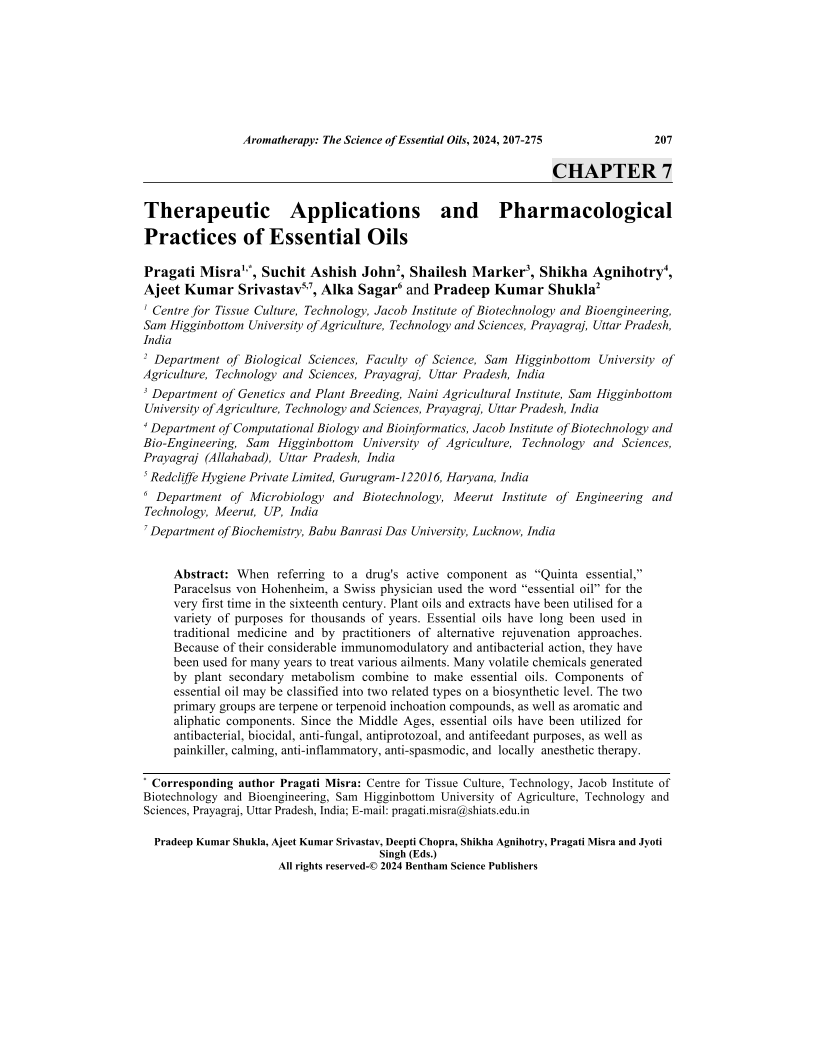Therapeutic Applications and Pharmacological Practices of Essential Oils

- Authors: Pragati Misra1, Shikha Agnihotry2, Suchit Ashish John3, Shailesh Marker4, Ajeet Kumar Srivastav5, Alka Sagar6, Pradeep Kumar Shukla7
-
View Affiliations Hide Affiliations1 Centre for Tissue Culture, Technology, Jacob Institute of Biotechnology and Bioengineering, Sam Higginbottom University of Agriculture, Technology and Sciences, Prayagraj, Uttar Pradesh, India 2 Department of Computational Biology and Bioinformatics, Jacob Institute of Biotechnology and Bio Engineering, Sam Higginbottom University of Agriculture, Technology and Sciences, Prayagraj (Allahabad), Uttar Pradesh, India 3 Department of Biological Sciences, Faculty of Science, Sam Higginbottom University of Agriculture, Technology and Sciences, Prayagraj, Uttar Pradesh, India 4 Department of Genetics and Plant Breeding, Naini Agricultural Institute, Sam Higginbottom University of Agriculture, Technology and Sciences, Prayagraj, Uttar Pradesh, India 5 Redcliffe Hygiene Private Limited, Gurugram-122016, Haryana, India 6 Department of Microbiology and Biotechnology, Meerut Institute of Engineering and Technology, Meerut, UP, India 7 Department of Biological Sciences, Faculty of Science, Sam Higginbottom University of Agriculture, Technology and Sciences, Prayagraj, Uttar Pradesh, India
- Source: Aromatherapy: The Science of Essential Oils , pp 207-275
- Publication Date: April 2024
- Language: English
Therapeutic Applications and Pharmacological Practices of Essential Oils, Page 1 of 1
< Previous page | Next page > /docserver/preview/fulltext/9789815136203/chapter-7-1.gif
When referring to a drug's active component as "Quinta essential," Paracelsus von Hohenheim, a Swiss physician used the word "essential oil" for the very first time in the sixteenth century. Plant oils and extracts have been utilised for a variety of purposes for thousands of years. Essential oils have long been used in traditional medicine and by practitioners of alternative rejuvenation approaches. Because of their considerable immunomodulatory and antibacterial action, they have been used for many years to treat various ailments. Many volatile chemicals generated by plant secondary metabolism combine to make essential oils. Components of essential oil may be classified into two related types on a biosynthetic level. The two primary groups are terpene or terpenoid inchoation compounds, as well as aromatic and aliphatic components. Since the Middle Ages, essential oils have been utilized for antibacterial, biocidal, anti-fungal, antiprotozoal, and antifeedant purposes, as well as painkiller, calming, anti-inflammatory, anti-spasmodic, and locally anesthetic therapy.However, little is understood about how essential oils function. Plant oils and extracts' antimicrobial characteristics have served as the foundation for a variety of enterprises, including pharmaceuticals, alternative medicine, and herbal treatments.
-
From This Site
/content/books/9789815136203.chapter-7dcterms_subject,pub_keyword-contentType:Journal -contentType:Figure -contentType:Table -contentType:SupplementaryData105

